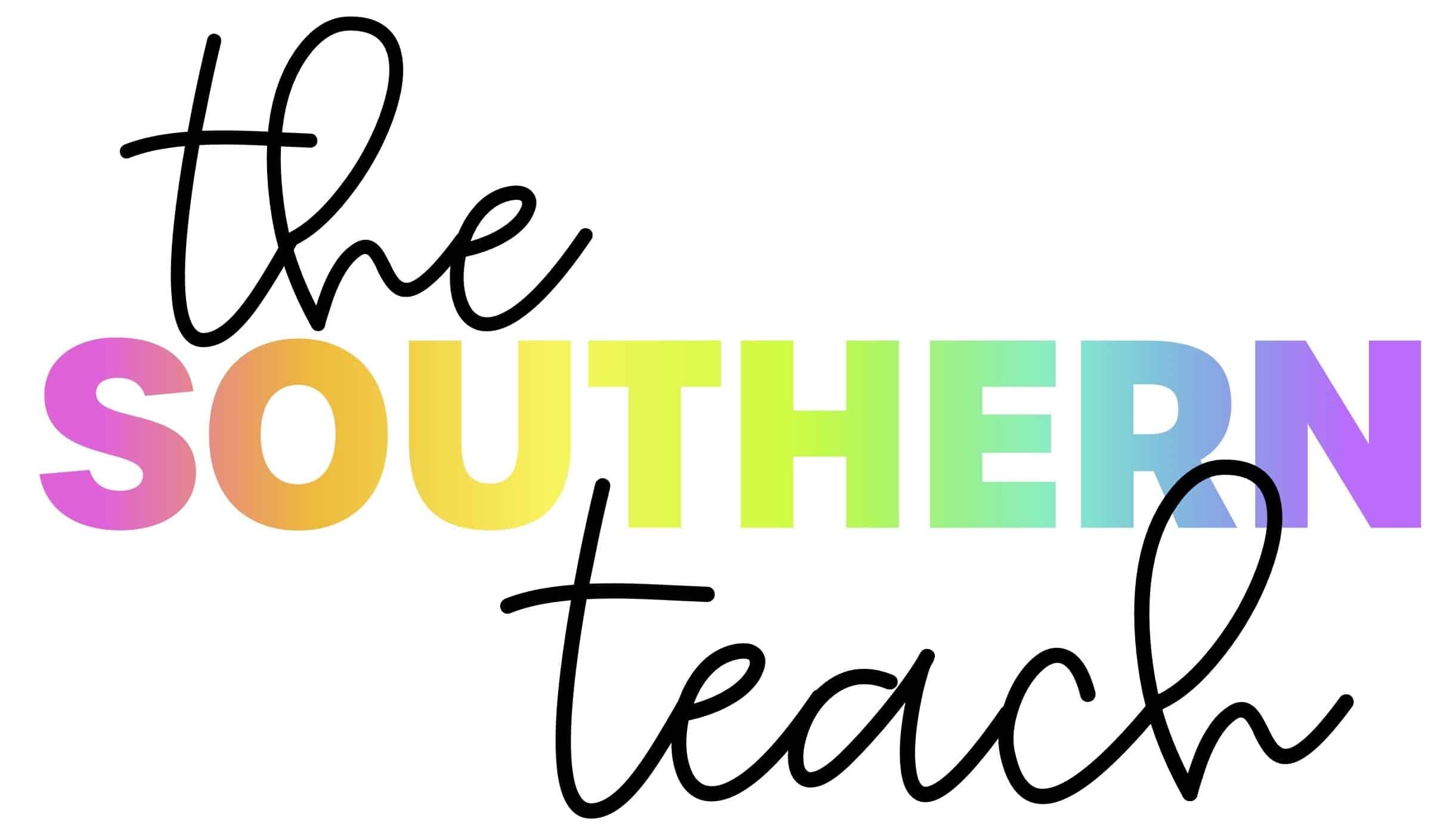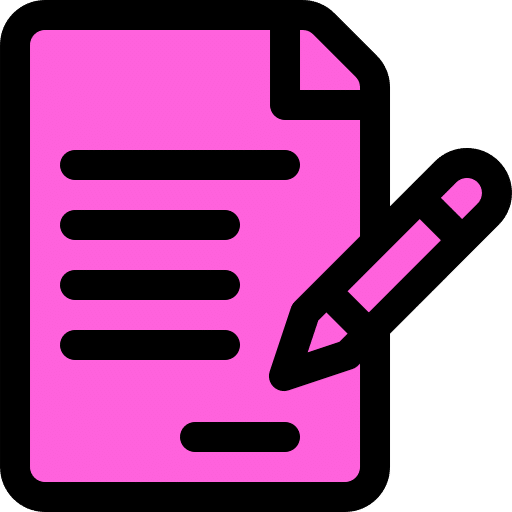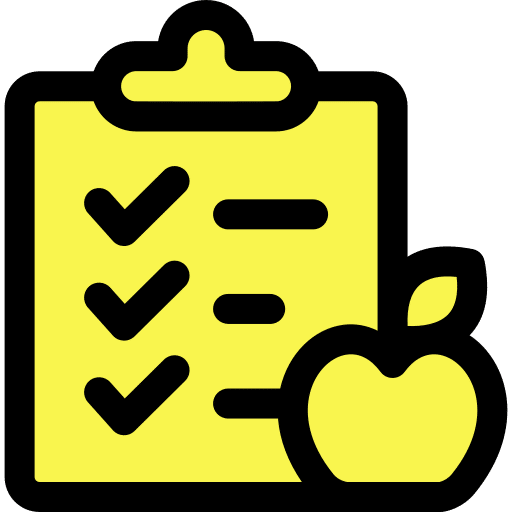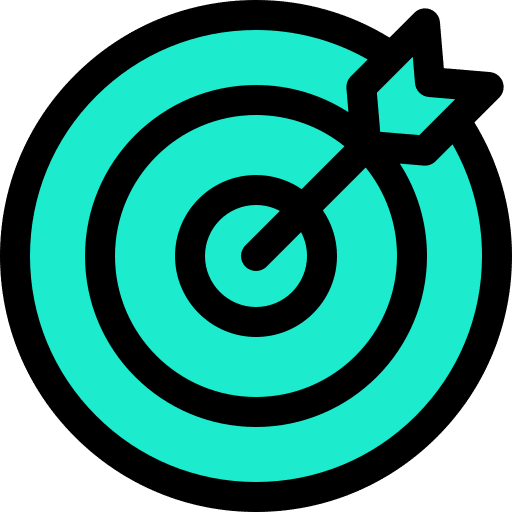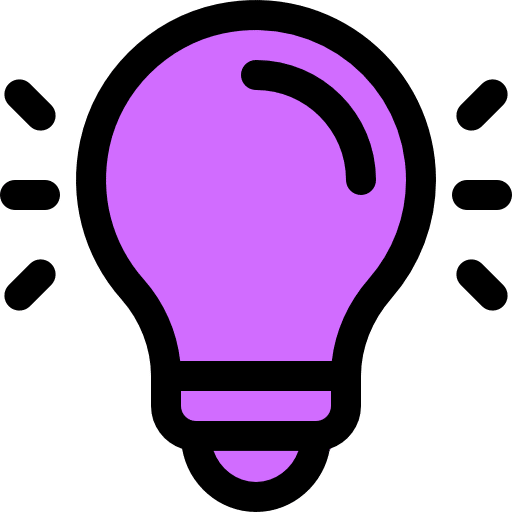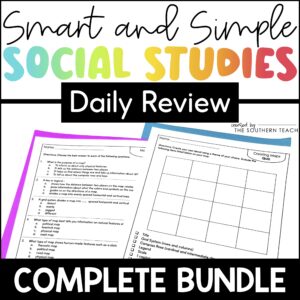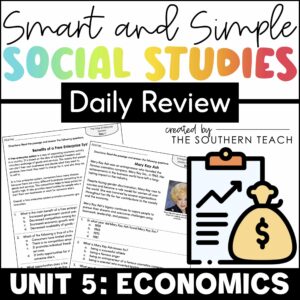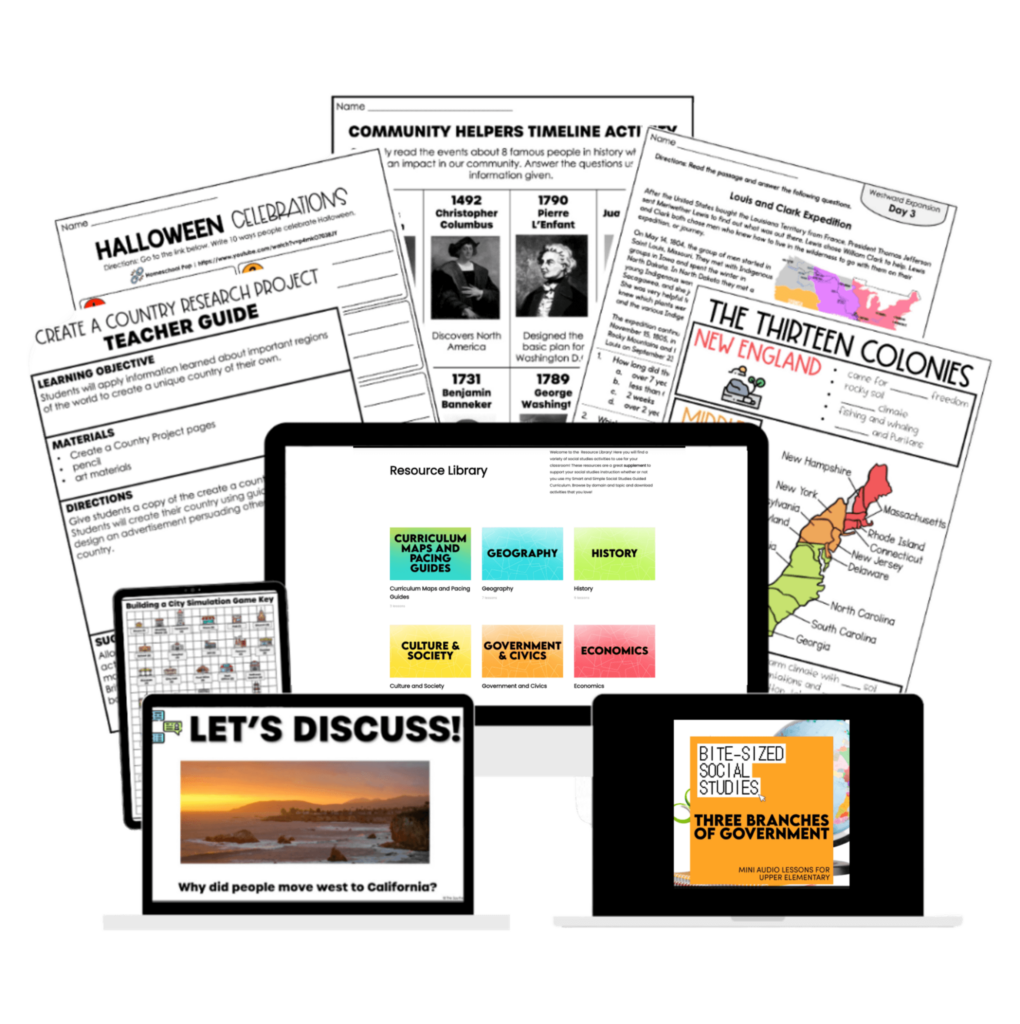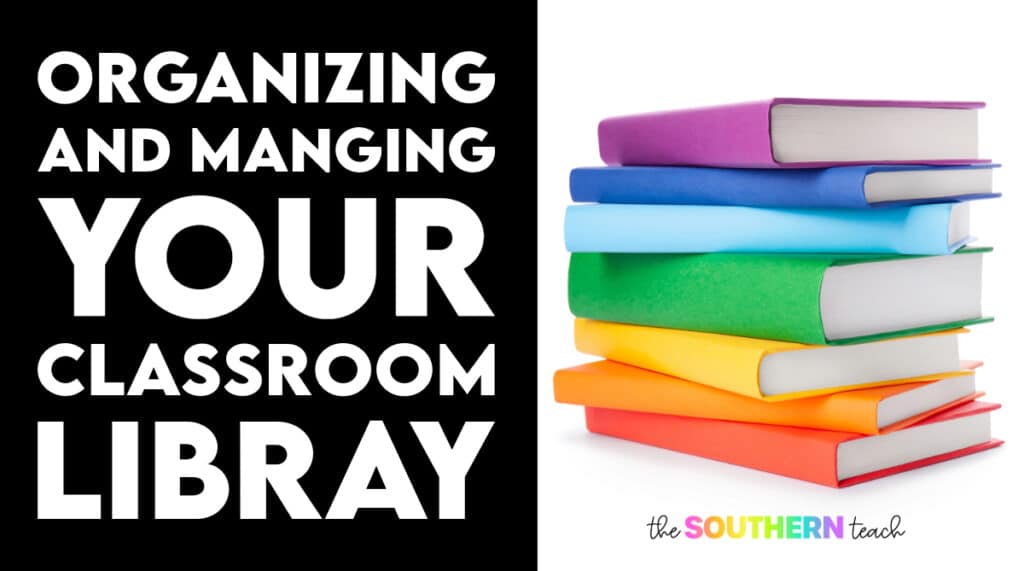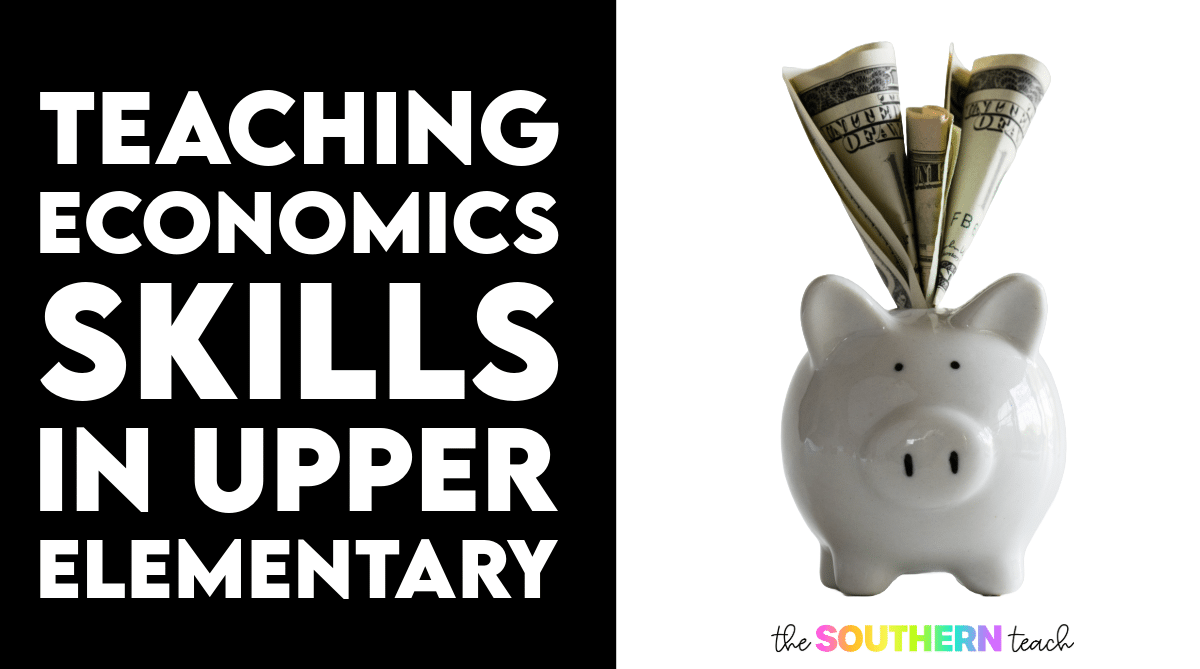
7 Tips and Activity Ideas for Teaching Economics Skills in Upper Elementary
By Kirsten Hammond
Share This Post:
Teaching economics skills might seem challenging, but with the right approach and resources, you can make it fun and educational. By breaking down complex ideas into simple steps and using hands-on activities, you can help your students understand the basics of economics and how they relate to the world around them.
In this article, we’re wrapping up the Social Studies Summer Series with a focus on teaching economics and the free enterprise system to upper elementary students.

1. Start with the Basics
The first step in teaching economics skills is to start with the basics. Introduce your students to key concepts like needs versus wants, goods versus services, producers versus consumers, and supply versus demand.
Use relatable examples to make these ideas more understandable. For example, if you have a student named Bob who loves candy, you could ask, “If Bob buys Sour Patch Kids, are these goods or services?” This type of questioning makes learning relatable and fun for the students.
2. Make It Interactive
To keep students engaged, include interactive activities in your lessons. One idea is to set up a classroom market or store where students can buy and sell goods using play money or currency they’ve earned in class. This hands-on activity reinforces key concepts and gives students a practical understanding of how markets work.
Another fun idea is to hold a mock auction to show how supply and demand determine prices. You can even invite a real auctioneer or have a silent auction. This activity makes learning about economics skills exciting and memorable.
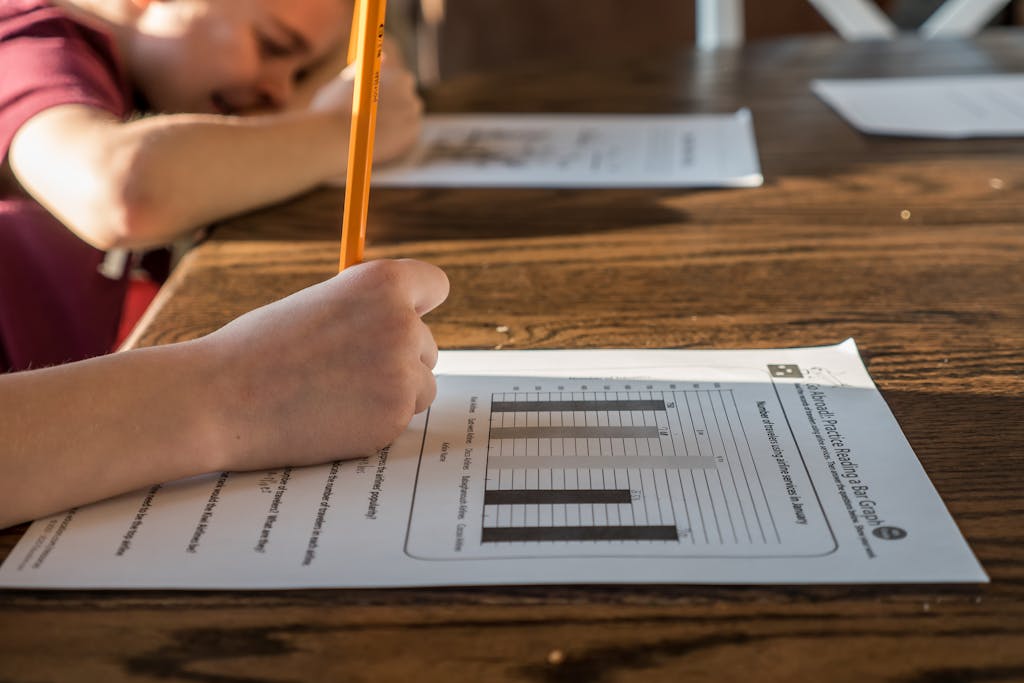
3. Use Visual Aids
Visual aids like charts, graphs, and diagrams can help students understand economic concepts. For instance, you could use a graph to show the production process or a flowchart to illustrate how money circulates in the economy.
Visual representations make abstract ideas more concrete and easier for students to grasp.
4. Explore Real-World Examples
While classroom scenarios are helpful, it’s also important to look at real-world examples of the free enterprise system.
Discuss how businesses operate in your local community and the role of entrepreneurship. Highlight how competition drives innovation and growth. Encourage students to identify local businesses and talk about how they contribute to the economy.
Comparing economic activities from the past and present can also provide valuable insights and deepen their understanding.
5. Promote Critical Thinking
Encouraging critical thinking is key to teaching economics skills! Present students with hypothetical or real scenarios and ask them to analyze the economic implications.
For example, you could ask what might happen if a popular product’s supply suddenly decreased. Activities like this help students develop problem-solving skills and understand the complexity of economic decision-making.
6. Connect to Current Events
Relate economic concepts to current events to make learning more relevant and engaging. Discuss topics like inflation, unemployment, international trade, and environmental sustainability.
By linking these issues to what they are learning, students can see how economics affects the world around them. This approach shows that economics is not just theoretical but a practical field that impacts their daily lives.

7. Encourage Collaboration
Foster collaboration and teamwork by incorporating group projects and discussions into your lessons. Have students work together on activities like creating a business plan, conducting market research, or brainstorming solutions to real-world economic problems. These collaborative projects help students develop communication and teamwork skills while learning about economics skills.
One successful project idea is to have students create a business. They can decide on a product or service, determine production costs, set prices, and create prototypes. This project teaches them about economics and sparks creativity and entrepreneurial thinking.
Additional Resources for Teaching Economics Skills
To support your teaching efforts, consider using resources like these daily economics passages. These passages cover various topics suitable for third through fifth-grade students and include reading comprehension questions, quizzes, pacing guides, glossaries, and answer keys. They provide a structured way to consistently teach economics throughout the year and can be a valuable addition to your teaching toolkit.
Click the pictures below to learn more about these resources!
If you’re interested in accessing these resources, check out the Smart and Simple Social Studies membership, which offers a comprehensive library of supplemental materials for various domains!
kirsten hammond
Kirsten is a former 3rd and 5th grade teacher who loves helping upper elementary teachers by creating resources and sharing ideas that are engaging, research-based, and TEKS-aligned. She is a work-from-home mama of 3 rambunctious little ones and loves running, true crime, and lots of coffee.
